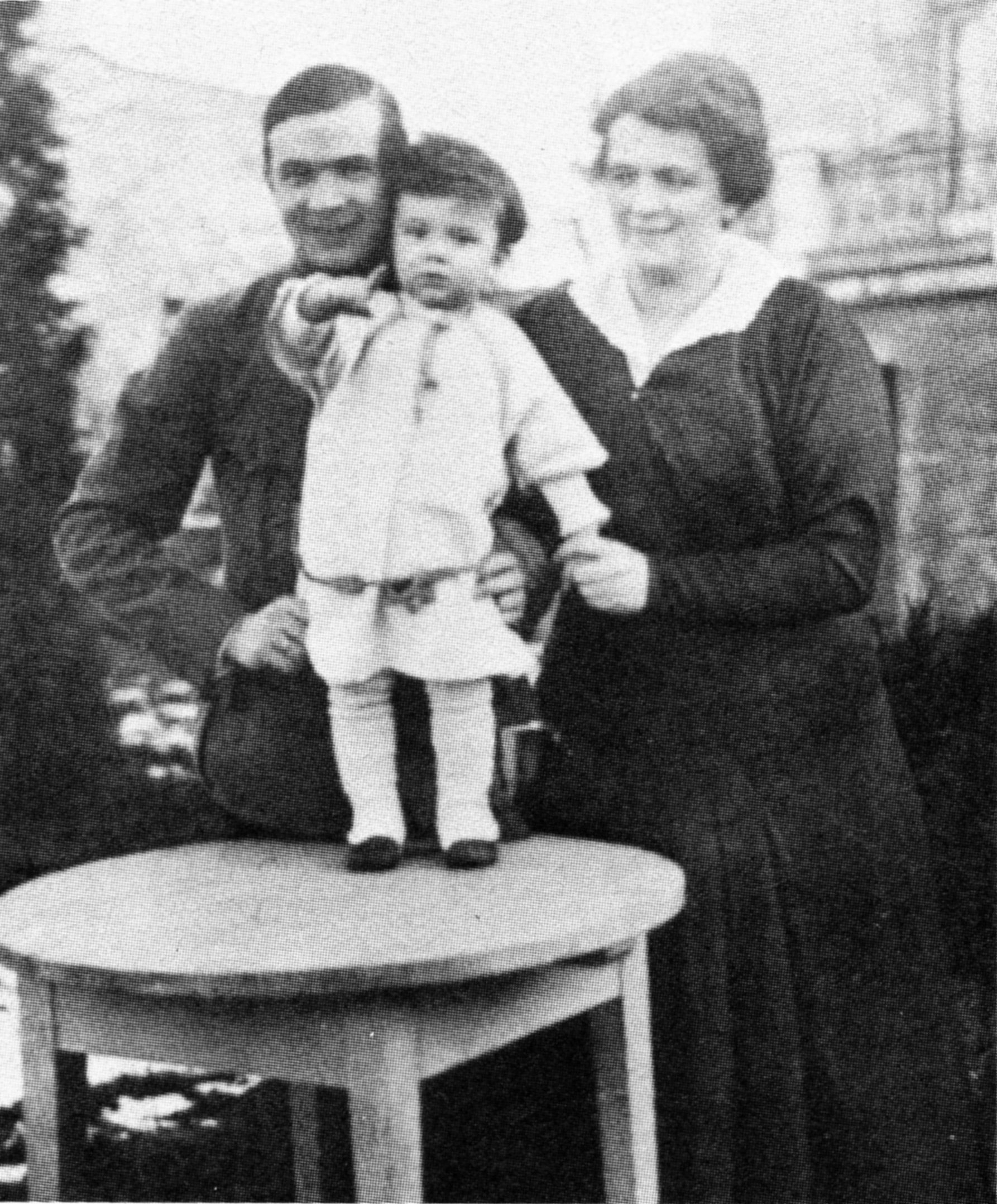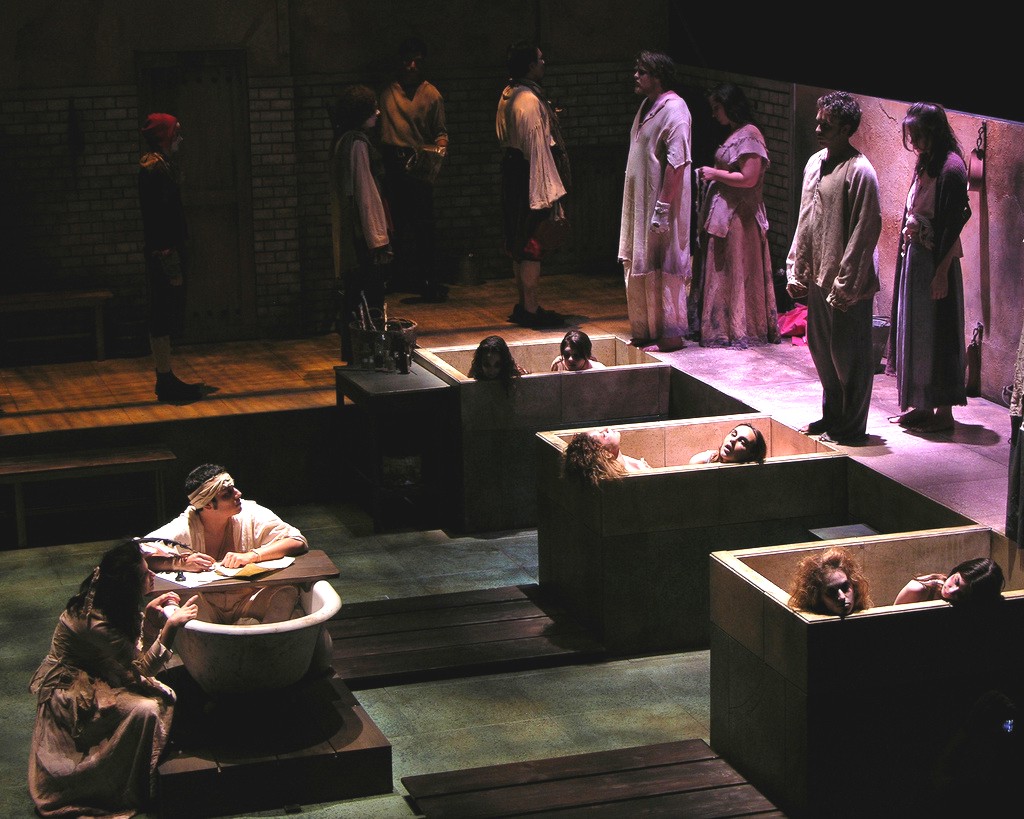|
20th Tony Awards
The 20th Annual Tony Awards was broadcast on June 16, 1966, from the Rainbow Room at Rockefeller Center on radio station WCBS. This was the first afternoon Tony Awards ceremony. The Masters of Ceremonies were George Abbott and Ginger Rogers. The ceremony was sponsored by the League of New York Theatres in conjunction with the American Theatre Wing, which had previously solely arranged the ceremony. Zolotow, Sam. ''the New York Times'', "5 Tonys Awards to 'LaMancha'", June 17, 1966, p.37 The ceremony Presenters: Lauren Bacall, Herschel Bernardi, Sandy Dennis, Henry Fonda, Phil Ford, Mimi Hines, Ray Milland, Barry Nelson, Mike Nichols, Thelma Oliver, April Olrich, Maureen O'Sullivan, Neil Simon Music was by Meyer Davis and his Orchestra. Award winners and nominees ''Winners are in bold'' Special awards Helen Menken (posthumous), for a lifetime of devotion and dedicated service to the Broadway theatre. Multiple nominations and awards These productions had multiple nominati ... [...More Info...] [...Related Items...] OR: [Wikipedia] [Google] [Baidu] |
Rainbow Room
The Rainbow Room is a private event space on the 65th floor of 30 Rockefeller Plaza at Rockefeller Center in Midtown Manhattan, New York City. Run by Tishman Speyer, it is among the highest venues in New York City. The Rainbow Room was designed by architect Wallace K. Harrison and interior designer Elena Bachman Schmidt. Opened in 1934, it was a focal point for the city's elite, as well as one of the United States' highest restaurants above ground. The restaurant's interior is designated as a New York City Landmarks Preservation Commission, New York City landmark. After 30 Rockefeller Plaza opened in 1933, there were plans to use the space above the 64th floor as a public "amusement center"; this became the Rainbow Room. The restaurant closed in 1942 due to World War II and reopened in 1950. It received renovations in 1965 and 1985–1987, both of which sought to restore its original 1930s decor. Suffering from a decline in business after the 2008 financial crisis, the Rainbow ... [...More Info...] [...Related Items...] OR: [Wikipedia] [Google] [Baidu] |
Mimi Hines
Mimi Hines (July 17, 1933 – October 21, 2024) was a Canadian actress, singer, and comedian, best known for her appearances on ''The Ed Sullivan Show'', ''The Tonight Show'' and her work on Broadway. She succeeded Barbra Streisand in the original production of '' Funny Girl''. Life and career Hines was born in Vancouver, British Columbia, Canada on July 17, 1933, the daughter of Eugene Saborne and Lillian Hines. Her parents split when she was young, and she used her mother's surname. She worked for a time in Anchorage, Alaska, where she met comedian Phil Ford in 1952 while they were working at different night clubs. They married in 1954 and divorced in 1972. On August 28, 1958, she and Ford appeared on ''The Tonight Show'' for the first time. Hines sang " Till There Was You". In a later stand-up routine on ''The Tonight Show'', she portrayed the NBC peacock. In 1959 she sang several of the numbers on the Juan García Esquivel- Ray Martin Christmas song collaboration, ''The ... [...More Info...] [...Related Items...] OR: [Wikipedia] [Google] [Baidu] |
Philadelphia, Here I Come!
''Philadelphia, Here I Come!'' is a 1964 play by Irish dramatist Brian Friel. Set in the fictional town of Ballybeg, County Donegal, the play launched Friel onto the international stage. The play was first staged at the Gaiety Theatre, Dublin on September 28, 1964. In 1966, in the United States, it ran for 326 performances, and received several Tony Award nominations, including for Best Play and Best Director. The play has since been produced and performed numerous times throughout the years. Plot ''Philadelphia, Here I Come!'' centres on Gareth (Gar) O'Donnell's move to America, specifically Philadelphia. The play takes place on the night before and morning of Gar's departure to America. Gar is portrayed by two characters, Gar Public ("the Gar that people see, talk to, talk about") and Gar Private ("the unseen man, the man within, the conscience"). Gareth lives with his father, S. B. O'Donnell ("a responsible, respectable citizen") with whom he has never connected. Gar works ... [...More Info...] [...Related Items...] OR: [Wikipedia] [Google] [Baidu] |
John Osborne
John James Osborne (12 December 1929 – 24 December 1994) was an English playwright, screenwriter, actor, and entrepreneur, who is regarded as one of the most influential figures in post-war theatre. Born in London, he briefly worked as a journalist. before starting out in theatre as a stage manager and actor.. He lived in poverty for several years before his third produced play, '' Look Back in Anger'' (1956), brought him national fame. Based on Osborne's volatile relationship with his first wife, Pamela Lane, it is considered the first work of kitchen sink realism, initiating a movement which made use of social realism and domestic settings to address disillusion with British society in the waning years of the Empire.Heilpern, pp. 93–102 The phrase “ angry young man”, coined by George Fearon to describe Osborne when promoting the play, came to embody the predominantly working class and left-wing writers within this movement. Osborne was considered its leading figure ... [...More Info...] [...Related Items...] OR: [Wikipedia] [Google] [Baidu] |
Inadmissible Evidence
Admissible evidence, in a court of law, is any testimonial, documentary, or tangible evidence that may be introduced to a factfinder—usually a judge or jury—to establish or to bolster a point put forth by a party to the proceeding. For evidence to be admissible, it must be relevant and "not excluded by the rules of evidence", which generally means that it must not be unfairly prejudicial, and it must have some indicia of reliability. The general rule in evidence is that all relevant evidence is admissible and all irrelevant evidence is inadmissible, though some countries (such as the United States and, to an extent, Australia) proscribe the prosecution from exploiting evidence obtained in violation of constitutional law, thereby rendering relevant evidence inadmissible. This rule of evidence is called the exclusionary rule. In the United States, this was effectuated federally in 1914 under the Supreme Court case '' Weeks v. United States'' and incorporated against the st ... [...More Info...] [...Related Items...] OR: [Wikipedia] [Google] [Baidu] |
Peter Weiss
Peter Ulrich Weiss (8 November 1916 – 10 May 1982) was a German writer, painter, graphic artist, and experimental filmmaker of adopted Swedish nationality. He is particularly known for his plays ''Marat/Sade'' and '' The Investigation'' and his novel '' The Aesthetics of Resistance''. Peter Weiss earned his reputation in the post-war German literary world as the proponent of an avant-garde, meticulously descriptive writing, as an exponent of autobiographical prose, and also as a politically engaged dramatist. He gained international success with ''Marat/Sade'', the American production of which was awarded a Tony Award and its subsequent film adaptation directed by Peter Brook. His "Auschwitz Oratorium," '' The Investigation'', served to broaden the debates over the so-called "Aufarbeitung der Vergangenheit" (or formerly) "Vergangenheitsbewältigung" or "politics of history." Weiss's magnum opus was '' The Aesthetics of Resistance'', called one of the "most important German-lan ... [...More Info...] [...Related Items...] OR: [Wikipedia] [Google] [Baidu] |
Marat/Sade
''The Persecution and Assassination of Jean-Paul Marat as Performed by the Inmates of the Asylum of Charenton Under the Direction of the Marquis de Sade'' (), usually shortened to ''Marat/Sade'' (), is a 1963 play by Peter Weiss. The work was first published in German. Incorporating dramatic elements characteristic of both Antonin Artaud and Bertolt Brecht, it is a depiction of class struggle and human suffering that asks whether true revolution comes from changing society or changing oneself. Plot Set in the historical Charenton (asylum), Charenton Asylum, ''Marat/Sade'' is almost entirely a "play within a play". The main story takes place on 13 July 1808; the play directed by the Marquis de Sade within the story takes place 15 years earlier, during the French Revolution, culminating in the assassination (13 July 1793) of Jean-Paul Marat, then quickly brings the audience up to date (1808). The actors are the inmates of the asylum; the nurses and supervisors occasionally step in t ... [...More Info...] [...Related Items...] OR: [Wikipedia] [Google] [Baidu] |
Tony Award For Best Musical
The Tony Award for Best Musical is given annually to the best new Broadway musical, as determined by Tony Award voters. The award is one of the ceremony's longest-standing awards, having been presented each year since 1949. The award goes to the producers of the winning musical. A musical is eligible for consideration in a given year if it has not previously been produced on Broadway and is not "determined... to be a 'classic' or in the historical or popular repertoire", otherwise it may be considered for Best Revival of a Musical. Best Musical is the final award presented at the Tony Awards ceremony. Excerpts from the musicals that are nominated for this award are usually performed during the ceremony before this award is presented. This is a list of winners and nominees for the Tony Award for Best Musical. Winners and nominees 1940s 1950s 1960s 1970s 1980s 1990s 2000s 2010s 2020s Records Accumulated records as of 2022: * '' The Producers'' has won the most ... [...More Info...] [...Related Items...] OR: [Wikipedia] [Google] [Baidu] |
Tony Award For Best Play
The Tony Award for Best Play (formally, an Antoinette Perry Award for Excellence in Theatre) is an annual award given to the best new (non-musical) play on Broadway, as determined by Tony Award voters. There was no award in the Tonys' first year. The award goes to the authors and the producers of the play. Plays that have appeared in previous Broadway productions are instead eligible for Best Revival of a Play. Award winners Legend:† marks winners of the Pulitzer Prize for Drama * marks finalists of the Pulitzer Prize for Drama 1940s 1950s 1960s 1970s 1980s 1990s 2000s 2010s 2020s Multiple wins ; 5 awards * Tom Stoppard ; 2 awards * Edward Albee * Tony Kushner * Arthur Miller * Terrence McNally * Yasmina Reza * Peter Shaffer * Neil Simon Multiple nominations ; 10 nominations * Neil Simon ; 9 nominations * August Wilson ; 8 nominations * Tom Stoppard ; 6 nominations * Edward Albee ; 5 nominations * Martin McDonagh * Arthur Mill ... [...More Info...] [...Related Items...] OR: [Wikipedia] [Google] [Baidu] |
Neil Simon
Marvin Neil Simon (July 4, 1927 – August 26, 2018) was an American playwright, screenwriter and author. He wrote more than 30 plays and nearly the same number of movie screenplays, mostly film adaptations of his plays. He received three Tony Awards and a Golden Globe Award, as well as nominations for four Academy Awards and four Primetime Emmy Awards. He was awarded a 29th Tony Awards, Special Tony Award in 1975, the Pulitzer Prize for Drama in 1991, the Kennedy Center Honors in 1995 and the Mark Twain Prize for American Humor in 2006. Simon grew up in New York City during the Great Depression. His parents' financial difficulties affected their marriage, giving him a mostly unhappy and unstable childhood. He often took refuge in movie theaters, where he enjoyed watching early comedians like Charlie Chaplin. After graduating from high school and serving a few years in the United States Army Air Forces, Army Air Force Reserve, he began writing comedy scripts for radio progr ... [...More Info...] [...Related Items...] OR: [Wikipedia] [Google] [Baidu] |
Maureen O'Sullivan
Maureen Paula O'Sullivan (May 17, 1911 – June 23, 1998) was an Irish actress who played Jane in the ''Tarzan'' series of films during the era of Johnny Weissmuller. She starred in dozens of feature films across a span of more than half a century and performed with such stars as Laurence Olivier, Greta Garbo, Fredric March, William Powell, Myrna Loy, Marie Dressler, Wallace Beery, Lionel Barrymore, the Marx Brothers and Woody Allen. In 2020, she was listed at number eight on ''The Irish Times'' list of Ireland's greatest film actors. O'Sullivan was born in Boyle, County Roscommon, Ireland. After attending schools in Dublin, England, and France, she moved to Hollywood to work for Fox Film Corporation. O'Sullivan's film career began in the 1930s, and she eventually became a contract player at Metro-Goldwyn-Mayer. She is best known for playing Jane Parker in six Tarzan films between 1932 and 1942, alongside Johnny Weissmuller. O'Sullivan also appeared in films such as ' ... [...More Info...] [...Related Items...] OR: [Wikipedia] [Google] [Baidu] |
April Olrich
April Olrich (17 July 1931 – 15 April 2014), born Edith April Oelrichs, was an English ballerina and actress, born in Zanzibar, now part of Tanzania. Early life Edith April Oelrichs was born in Zanzibar in 1931 (some sources incorrectly give 1933), where her father was in charge of the Eastern Telegraph Company. She also lived in the Seychelles and Argentina while she was growing up. Aged 13, she joined Colonel Wassily de Basil's Original Ballet Russe in Buenos Aires at the Teatro Colón, dancing with the company all over South America and in New York with George Balanchine."In Memoriam: April Olrich Pegram" ''Royal Ballet School'' (23 April 2014). Career Olrich joined The Sadler's Wells Ballet (soon to become the Royal Ballet) in 1949 under[...More Info...] [...Related Items...] OR: [Wikipedia] [Google] [Baidu] |





